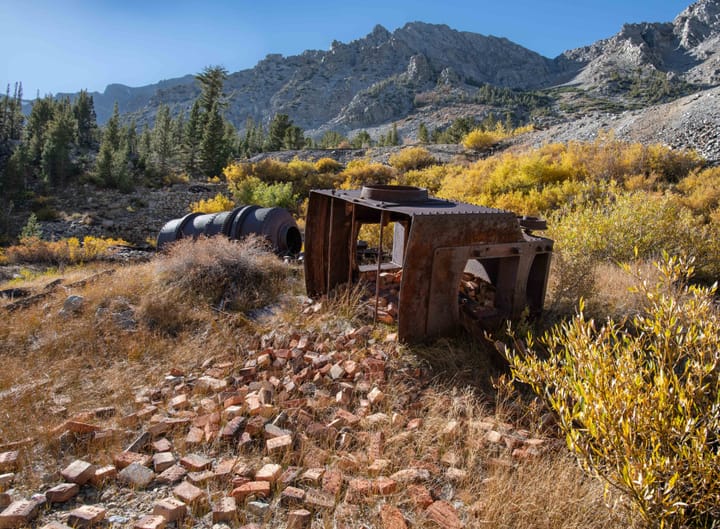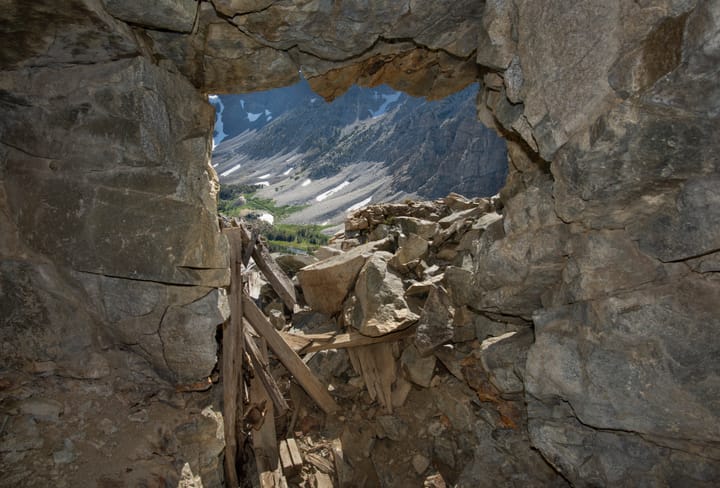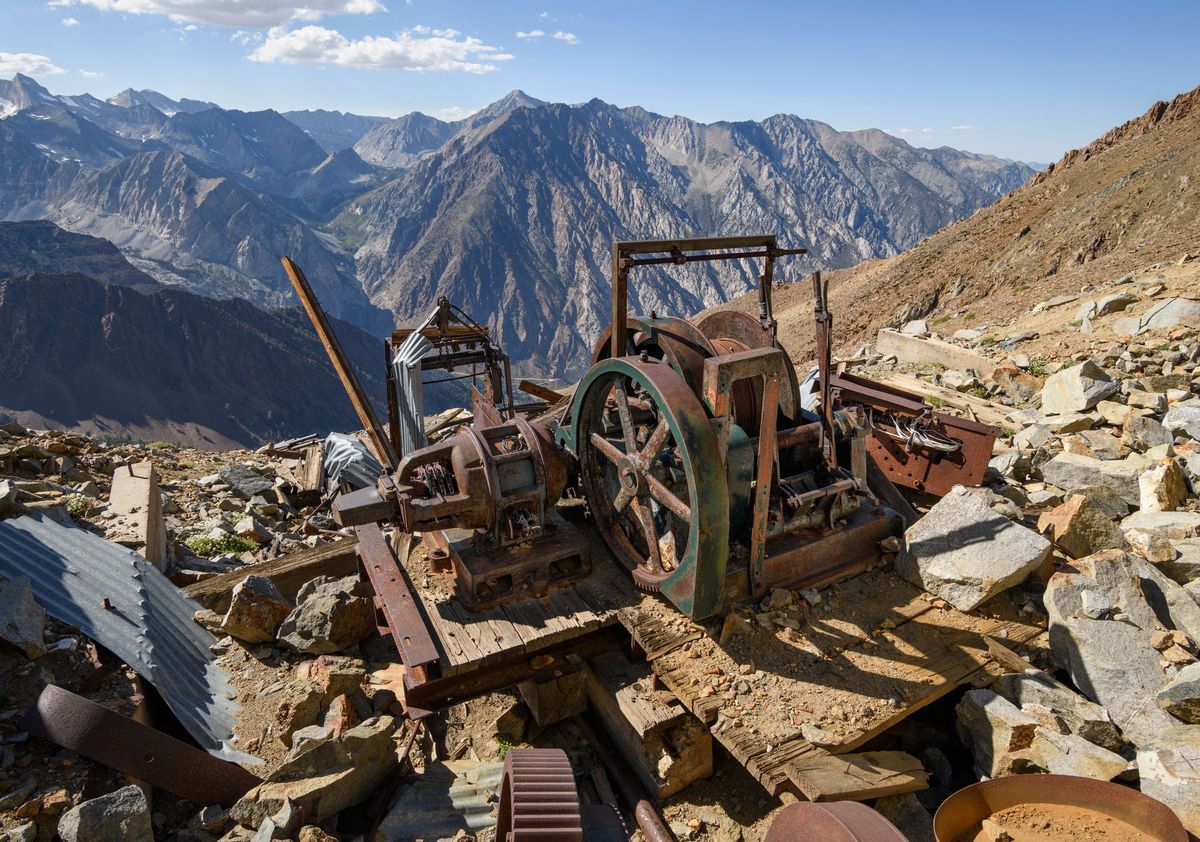In the late 1930s and early 1940s, surging worldwide demand for tungsten led to the opening of several tungsten mines in the High Sierra above Bishop. Two small but relatively high-grade ore bodies were discovered on the west side of Mt. Tom, which would become the Hanging Valley Mine and the Tungstar Mine. Although both were located in very remote locations, at an elevation of almost 12,000 feet, the high wartime prices for tungsten and the quality of the ore made mining operations economically feasible.
Read next

May Lundy Mine
Just northwest of Mono Lake lies Lundy Canyon, home to a Mono County campground, a large lake, and a small resort with a few cabins and campsites. Most visitors today come for the fishing, hiking, and fall color, probably unaware that this quiet area was once home to a booming

Tip Top Mine

Big Emma Mine
Hidden in the mountains just northwest of Mono Lake lie two of the most beautiful canyons in the Eastern Sierra, Lundy and Lake Canyons. Perched high on the wall of Lake Canyon, in a seemingly unreachable location, sits the remains of the Big Emma gold mine. This adventurous all-day hike
